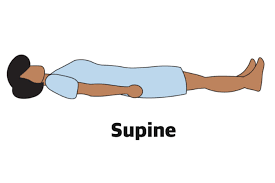A patient who is on droplet precautions requires daily blood glucose monitoring. Besides gloves, which piece of personal protective equipment must the phlebotomist wear when drawing the sample?
Shoe covers
Mask
Gown
Goggles
The Correct Answer is B
Choice A Reason:
Shoe covers are used to protect the shoes and prevent the spread of contaminants from one area to another. They are not specifically required for droplet precautions during blood glucose monitoring. Droplet precautions typically focus on protecting mucous membranes of the eyes, nose, and mouth from droplet spatter.
Choice B Reason:
Masks are essential when dealing with patients under droplet precautions. Droplets can transmit infections when a person coughs, sneezes, or talks, and a mask provides a barrier that prevents the inhalation of these potentially infectious droplets. For procedures like blood glucose monitoring, where close contact with the patient is necessary, wearing a mask is crucial to protect both the healthcare worker and the patient.
Choice C Reason:
A gown is used to protect the healthcare worker's skin and clothing from contamination with potentially infectious material. While it is an important piece of personal protective equipment, it is not the primary requirement for droplet precautions in the context of blood glucose monitoring, unless there is a risk of substantial splashing or spraying of bodily fluids.
Choice D Reason:
Goggles are used to protect the eyes from splashes of blood or other body fluids. They are important in procedures where there is a risk of splashing, but for blood glucose monitoring, the risk is minimal. Therefore, goggles are not the primary piece of equipment required for droplet precautions in this scenario.
Nursing Test Bank
Naxlex Comprehensive Predictor Exams
Related Questions
Correct Answer is A
Explanation
Choice A Reason:
The supine position, where the patient lies flat on their back with the face upward, is the correct position for initiating CPR. This position allows for proper chest compressions and airway management, which are critical components of CPR.
Choice B Reason:
The Semi-Fowler's position, where the patient is partially sitting up with the head of the bed raised to 30-45 degrees, is not suitable for CPR. This position would make it difficult to perform effective chest compressions.
Choice C Reason:
The prone position, where the patient lies flat on their stomach, is not appropriate for CPR. Chest compressions cannot be effectively delivered in this position, and it would also complicate airway management.
Choice D Reason:
The side-lying position is not appropriate for CPR. While this position can be used for an unconscious patient who is breathing normally to maintain an open airway and prevent aspiration, it is not suitable for CPR, which requires the patient to be on their back.

Correct Answer is C
Explanation
Choice A Reason:
Blood for HIV testing does not typically require a chain of custody form. HIV testing is a confidential medical test, but the results are not usually used for legal purposes, which is when a chain of custody would be necessary.
Choice B Reason:
Sputum for tuberculosis testing also does not require a chain of custody form. While the test is critical for diagnosing tuberculosis, the results are used for medical diagnosis and treatment rather than legal proceedings.
Choice C Reason:
Blood for paternity testing requires a chain of custody form because the results can have legal implications, such as establishing paternity for child support or custody cases. The chain of custody ensures that the sample is properly handled and tracked from collection to analysis, preventing tampering or misidentification.
Choice D Reason:
A swab for chlamydia testing, like HIV testing, is a confidential medical test that does not usually require a chain of custody form. The results are used for medical purposes, such as diagnosis and treatment, rather than legal proceedings.
Whether you are a student looking to ace your exams or a practicing nurse seeking to enhance your expertise , our nursing education contents will empower you with the confidence and competence to make a difference in the lives of patients and become a respected leader in the healthcare field.
Visit Naxlex, invest in your future and unlock endless possibilities with our unparalleled nursing education contents today
Report Wrong Answer on the Current Question
Do you disagree with the answer? If yes, what is your expected answer? Explain.
Kindly be descriptive with the issue you are facing.
